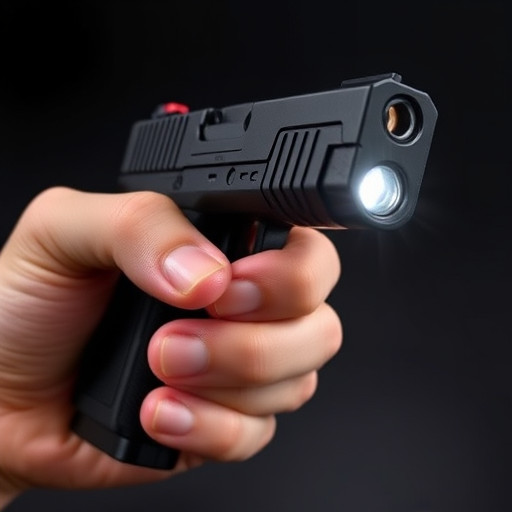In the U.S., individuals have constitutional rights to protect themselves and their property using tools like stun guns, but state laws governing their use vary widely. From liberal open carry states like Texas to stringent permit-requiring jurisdictions like New York, understanding local regulations is crucial to avoid legal issues. Researching and adhering to these laws, along with prioritizing safe training and considering stun guns as a last resort, ensures responsible self-defense stun gun ownership.
“Uncovering the legal landscape of self-defense stun guns is crucial for citizens seeking personal safety. This comprehensive guide explores your rights and the regulations surrounding stun guns in various states. We navigate the legal framework, highlighting key aspects like permits and restrictions. Discover which states allow the carrying of self-defense stun guns and gain insights into important considerations when using them. Enhance your knowledge to make informed decisions about personal safety.”
Understanding Self-Defense Rights and Stun Guns
In many parts of the United States, individuals have a constitutional right to protect themselves and their property. This right is often invoked when discussing self-defense tools, such as stun guns, which have gained popularity as personal safety devices. A stun gun, or electronic control device (ECD), delivers an electric shock designed to temporarily incapacitate an assailant, providing the user with valuable time to escape or seek help. Understanding your rights regarding self-defense and becoming familiar with local laws concerning stun guns is essential before considering their use.
Each state has its own set of regulations governing the possession and use of stun guns for self-defense. Some states allow individuals to carry stun guns openly, while others require them to be concealed. There may also be restrictions on the voltage or power output allowed, with certain states setting limits to ensure safety and reduce risk of excessive force. It’s crucial to research and understand these laws to ensure compliance and avoid any legal repercussions. Knowing your rights and responsibilities as a self-defense stun gun owner can go a long way in protecting yourself and staying within the boundaries of the law.
Legal Framework for Carrying a Stun Gun
The legal framework surrounding self-defense stun guns varies significantly across different states in the US, making it crucial for individuals considering carrying such a device to understand their state’s specific laws. While some states have liberalized regulations, allowing open carry or permit-less concealed carry of stun guns, others maintain strict controls, demanding permits or licensing. This disparity is driven by varying perceptions about public safety and the role of self-defense tools in society.
For instance, states like Texas and Arizona have relatively lenient laws, enabling residents to carry stun guns without a permit. Conversely, states such as New York and California have stringent regulations, often requiring permits or registration for possession. It’s essential for prospective users to research their state’s legal requirements, as non-compliance can lead to severe penalties, including fines and potential criminal charges.
States Allowing Self-Defense Stun Guns
In the United States, the legality of self-defense stun guns varies from state to state. Several states have specifically allowed the use of stun guns for personal protection, recognizing their effectiveness as non-lethal force tools. These states often have stringent requirements and regulations in place to ensure responsible ownership and usage.
Some states, like Texas and Florida, are known for their more lenient laws, permitting citizens to carry stun guns without a permit in certain circumstances. Other states, such as California and New York, have stricter controls, usually requiring permits or specific training certifications before allowing individuals to possess self-defense stun guns. Understanding the legal framework within your state is crucial when considering the acquisition of a self-defense stun gun for personal safety.
Important Considerations When Using a Stun Gun for Self-Defense
When considering a self defense stun gun, it’s crucial to understand the legal landscape in your state. While stun guns are generally legal across the US, regulations vary widely from one state to another. Some states have strict limitations on who can possess and carry a stun gun, while others offer more freedom. It’s essential to research and comply with local laws to avoid legal repercussions.
Additionally, beyond legal considerations, there are practical factors to keep in mind. Stun guns should only be used as a last resort for self-defense. They work by delivering an electric shock that can temporarily incapacitate an attacker, but they carry risks and potential side effects. Proper training and familiarity with the device are vital to ensure safe and effective use. Always remember that de-escalation and other non-lethal methods should be explored first before resorting to a stun gun.
